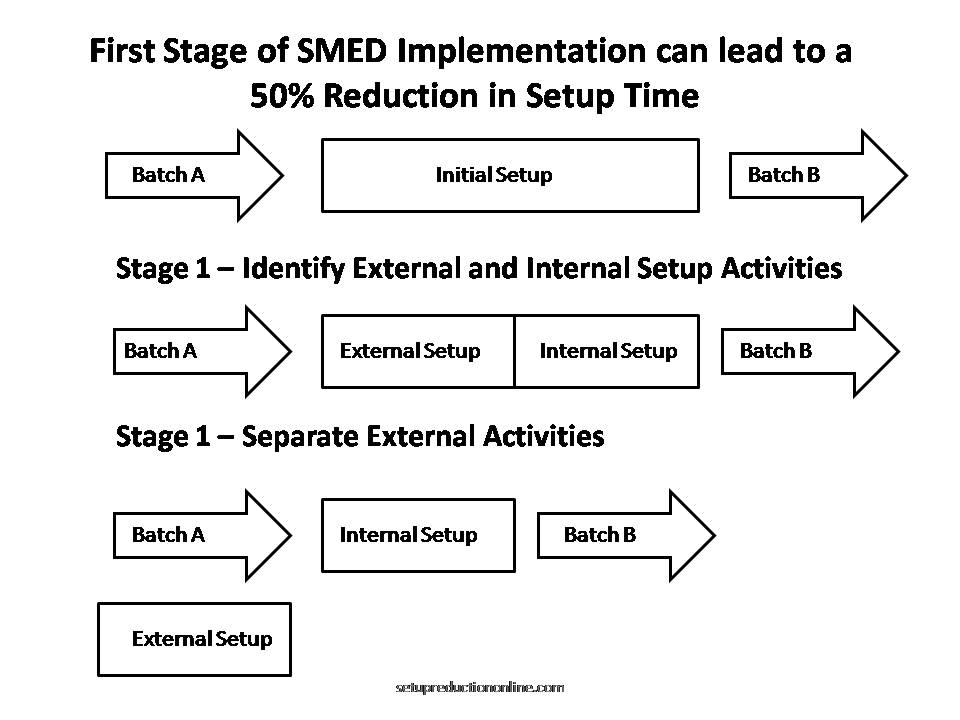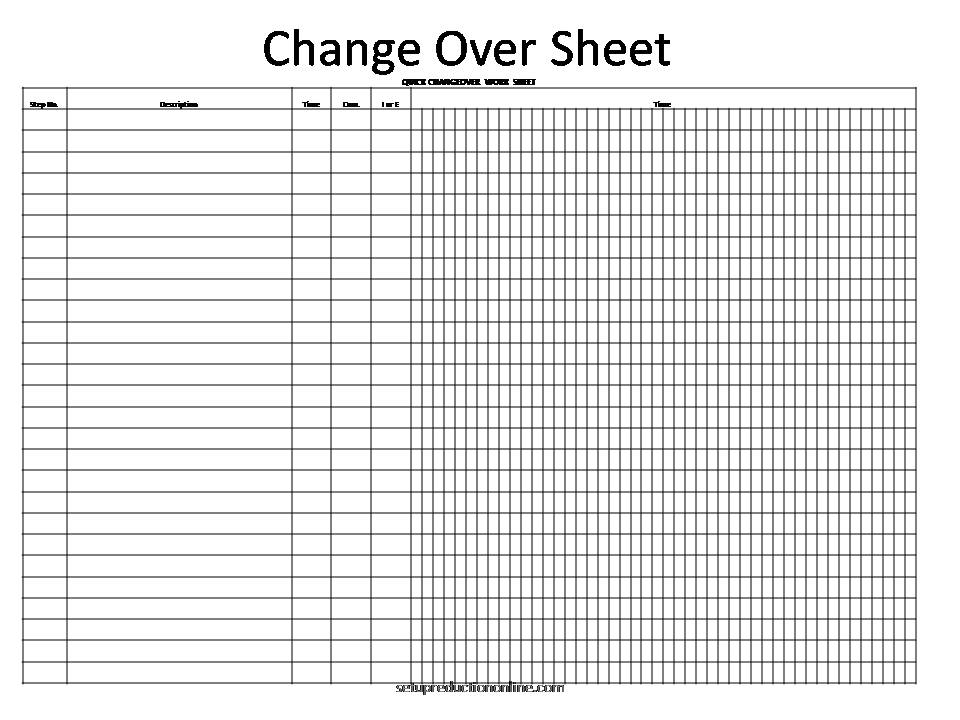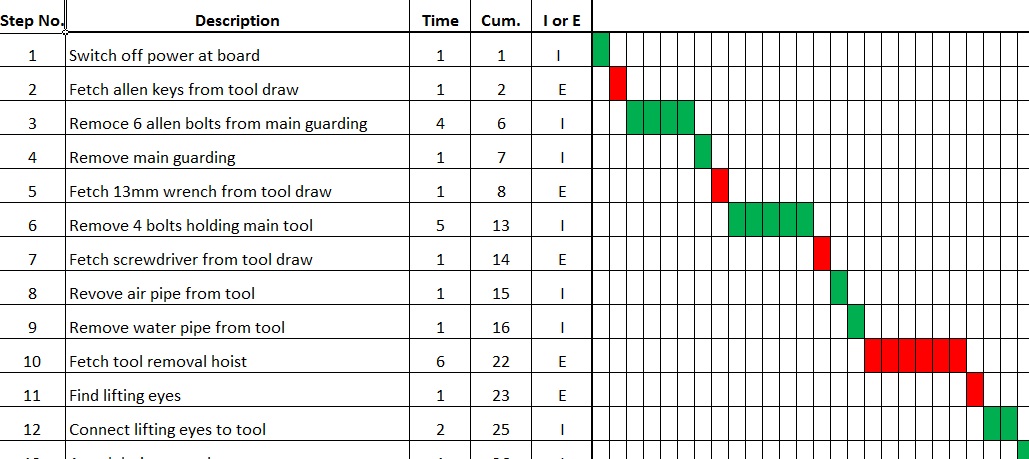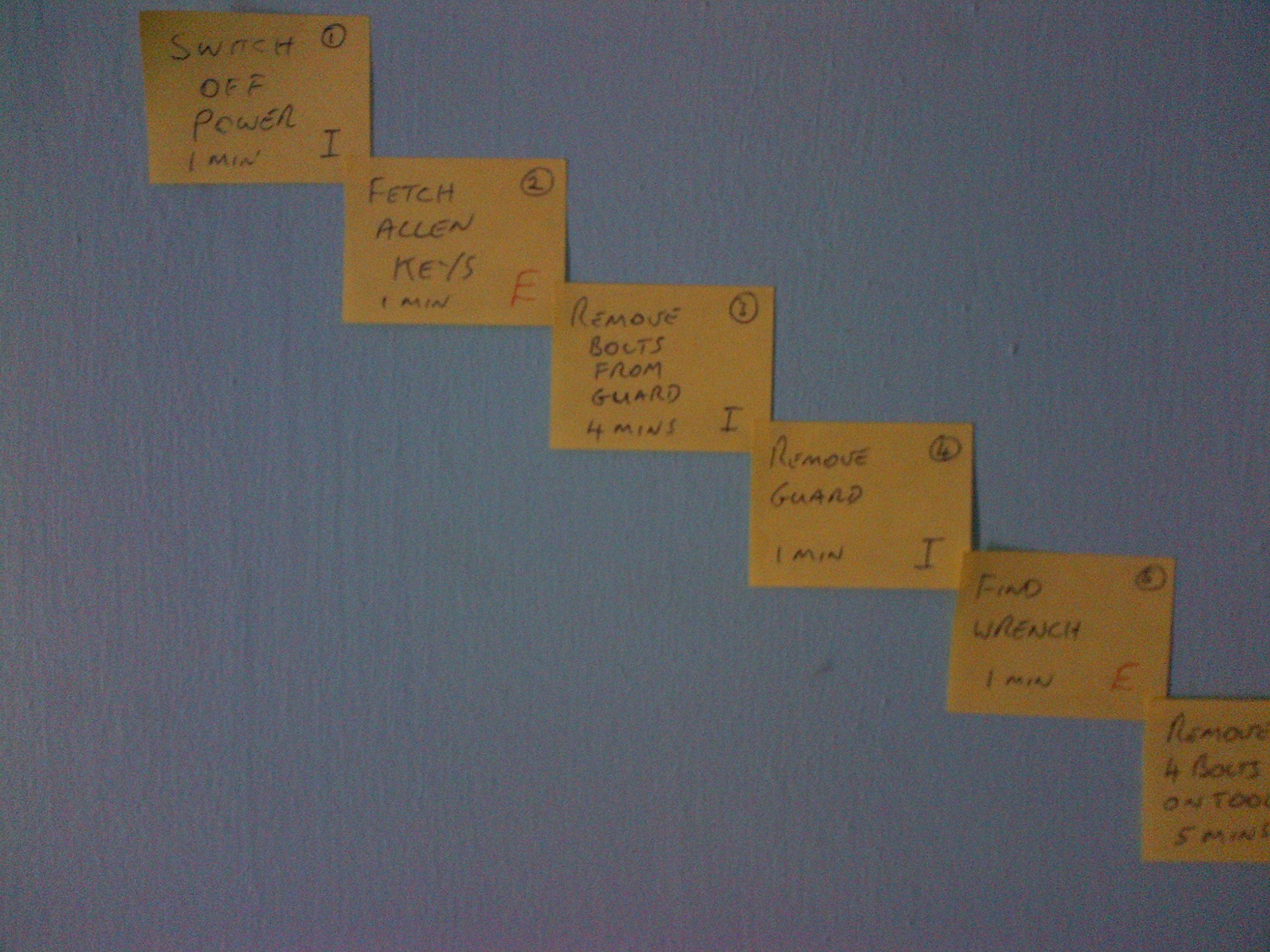Separate Internal and External Setup Activities
The First Stage of SMED
If Someone told you that you could easily reduce your changeover times by as much as 50% without spending any money or even having to work very hard you would probably tell them that they are talking rubbish. But that is what most companies achieve just through this initial analysis of the setup when implementing SMED. We often spend well over half of our changeover doing things that we could have had prepared before hand; so why do we do it – because we have always done it that way!
What are Internal and External Setup Activities?
When you conduct a setup on a process or a machine there are some parts of your setup that can be conducted while the machine is running and others that require that the equipment is stopped. Internal setup activities are those that require the process to be at a standstill before you can conduct them safely while external activities can be done while the process is still running.
Examples of External Setup activities
- Fetching new tooling
- Returning the old tooling
- Finding tools for the setup
- Finding correct paperwork
- Fetching raw materials
Examples of Internal Setup activities
- Removal of guarding from equipment
- Removal of the old tool
- Placing the new tool
- Connecting services such as air to new tool
- Clearing hoppers / material feeders
The Aim of separating external and Internal setup activities
Because all of your external activities can be done whilst the process is still running you can ensure that everything is done before you get to the point of the last part of the current batch. It is common that tools, equipment, paperwork and materials for instance are collected while the machine is already inactive. If everything is already prepared before you begin the “Internal” part of your setup then you will automatically eliminate all of this time from your setup. This first stage of your quick changeover will often save around 50% of your setup.
Identifying internal and External setup information
Video recording equipment is no longer something that is expensive nor difficult to use, so being able to video the setup from more than one angle is going to be relatively simple. Ensure that the lighting for your recording is adequate and have the person doing the recording talk through the process as it is being done. It is far better to do any analysis from a video as it allows the whole team to be able to review the stages of the setup together. The video of course can be paused and process times taken direct from the footage itself if times are required.
From the video recording use the entire team to identify each step of the changeover either using post-it notes as a flow chart or on the worksheet below. For each and every stage identified the team needs to decide if the step is either “I” internal or “E” external which should be recorded on the sheet or on each post-it.
At this stage depending on the experience and capability of your team you may also want to identify those steps that are also Waste. The seven wastes of lean are those steps within the process that you are observing that do not add any value whatever to the product or process. So moving and fetching would be considered as waste.
If you have more than one shift then it is always worth videoing each shift and repeating the exercise for each. You can then compare the different shifts to see what they do differently.
Free SMED worksheet download
Click the link below to download and use the quick changeover work sheet
SMED Worksheet Example
Using Post Its to Map your Changeover Process
Separate Internal and External activities for the next setup
Next we use the changeover analysis to fully separate the two lists of activities so that all of the external activities such as fetching tooling and information can be conducted before the machine is stopped for changeover. This step without any form of optimization will often result in at least 50% reduction in machine downtime.
Separate Internal and External SMED Activities
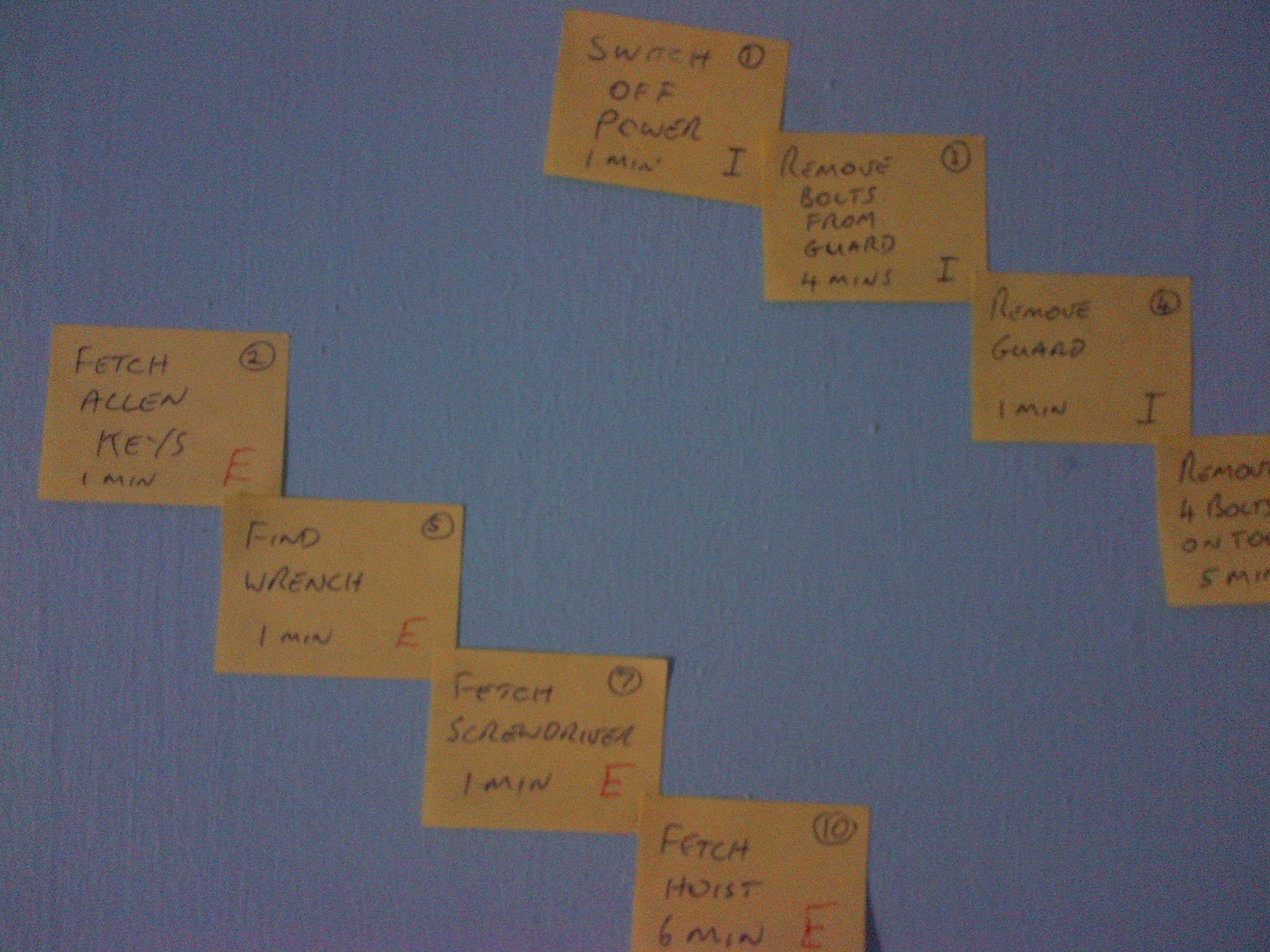
Separate all Internal (“I”) and External (“E”) activities so that external activities can be conducted while the machine is still running.
SMED Stage 2
The next stage of our SMED implementation is to look at the external activities that we have separated and to standardize them so that they are done efficiently for each set up. Click the link to discover how to standardize external activities.

